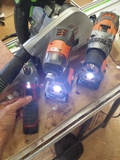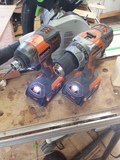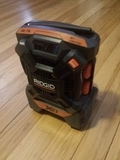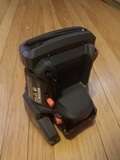I have some overview on the RIDGID brand...
Drill
Image not found: Image:RIDGIDDrill.jpg
thumb
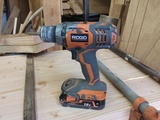
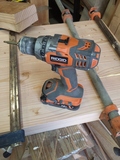
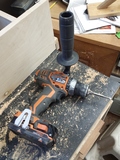
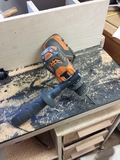
Had a six year old drop by the shop, he wanted something to do while his parents and I talked, so I grabbed a block of fir, a hammer and some nails, and as an afterthought grabbed the drill and some square drive screws. The thing that impressed me was that the low speed performance was what I'd come to expect from brushless motors. He was able to make that thing crawl as he figured out how to drive screws.
We also recently ran a sub-panel, and needed something to drive a hole saw for a bunch of holes. Normally I'd use my Festool C12 for this, but in the disaster of a project in play I couldn't find the appropriate chuck (normally I like interchangeable chucks, but...). The RIDGID does indeed have the low range torque capability to sprain your wrist, or ram your knuckles into the edge of an electrical panel, or do any number of other horrible things (and, yes, it has a detachable second handle that I should have put on...). Weirdly, it wouldn't do much of anything in the "2" range, the current limiter or whatever kicked in and the drill wouldn't re-start for a short time, but in low range it got us through, and between the two batteries and a lot of drilling carried us until we could turn the power back on to run the battery charger.
My only complaint: Where my Milwaukee drill has a setting that overrides the clutch, and the Festool drill has a slider that's adjustable with one hand, this drill takes a full rotation of the clutch to go from gentle clutch to driving screws mode, which means that if you use the same drill for driving screws as for drilling, it's more than changing the bit and a flick. So the answer is: This is not your only rotary tool on the job site. Have the impact driver or another drill around for driving screws.
Impact Driver
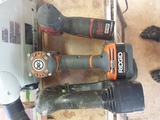
So the air vents at the back of the case make that feel a little flimsier than I think it should.
There's also something about the action of it that makes me reach for the smaller lighter Milwaukee first. But then I also have the luxury of being in the shop, where run-time isn't as much of an issue.
It may grow on me over time.
Light Location
My Festool C12 doesn't have a light. The Milwaukee has a light that's close to the axis of the bit. The RIDGID tools have the light in the bottom of the handle. In practice, this means I get a bit of shadow and depth from the light of the RIDGID tools, but when working in close quarters (like between the joists and sills of a house, running electrical wiring up into the wall) that shadow can obscure what I hoped to see.
Not sure which I like better, just something to be aware of.
Radio
This is a little job site radio that works off the 18v battery, and has a 3.5mm plug on a wire for plugging in your favorite audio source.
It's cute, seems to work, but...
The input should really be a socket, with the wire an accessory. Yeah, there are some potential dust and fouling issues, but it's far more likely that that wire is going to wear out or tear out, and it'd be nice if we could just replace the wire.
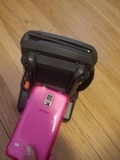
The audio quality is okay. I need to do head-to-head listening, but in the end I've gone back to a USB wall wart and a set of cheap computer speakers.
Might be handy on a job site, not so much in the shop.
